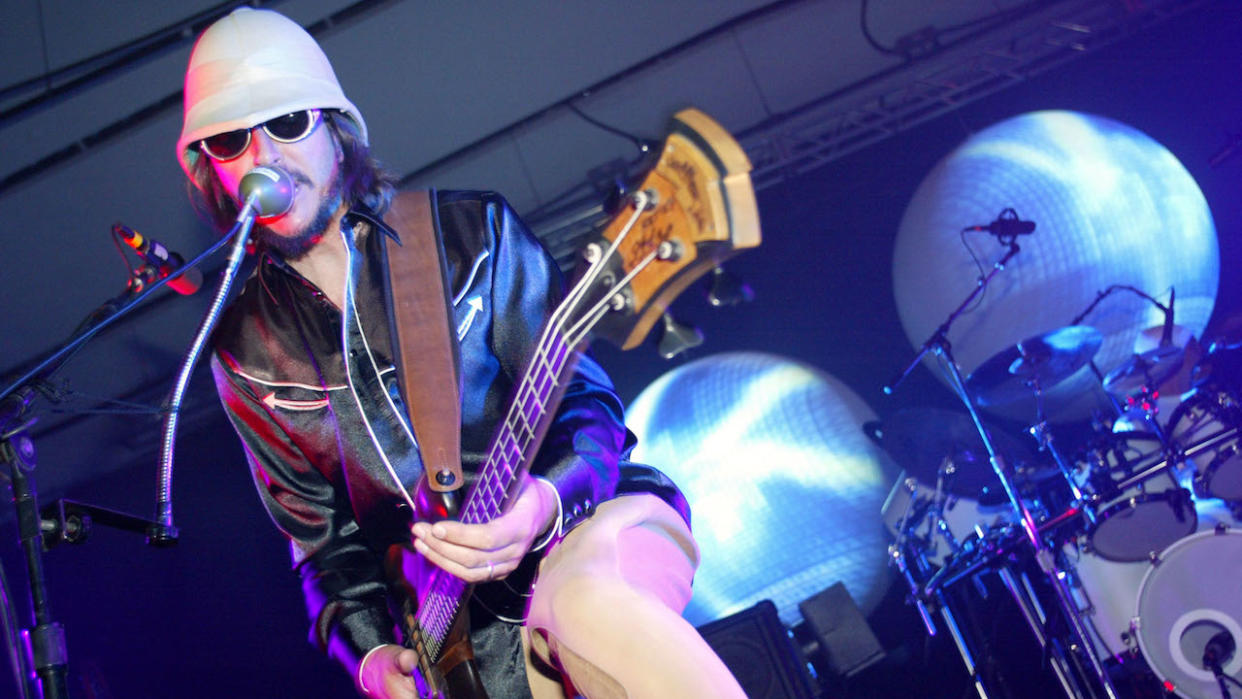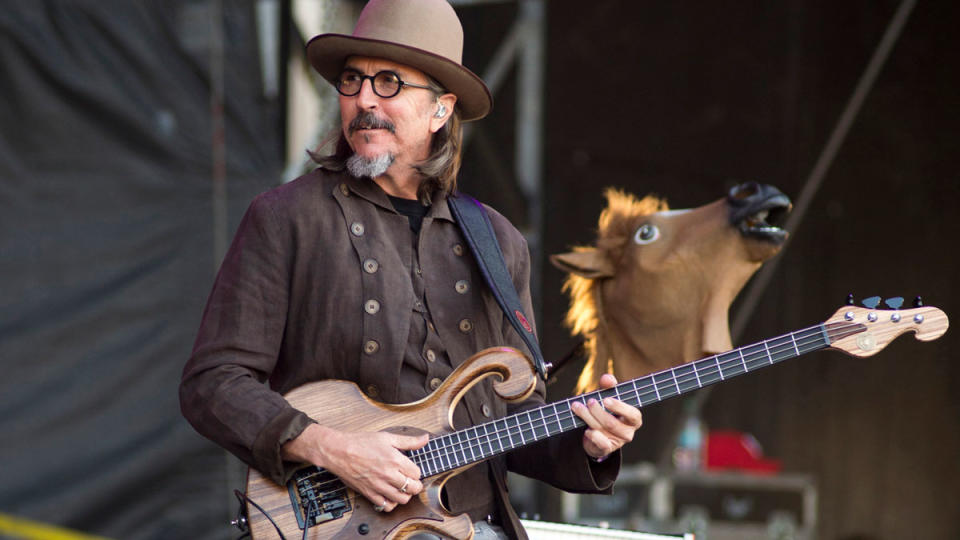"Like wrestling an octopus": How to play bass like Les Claypool

Les Claypool’s use of chords on bass guitar, his technically brilliant right-hand technique, the way he plays fast-moving triplets (or even quadruplets), his use of hammer-ons and pull-offs, and the hip grooves he comes up with. All of these elements made Primus, together with drummer Brian Mantias and guitarist Larry LaLonde, a band to be seriously reckoned with.
How did he come to develop such monstrous technical chops? “The slap stuff came out of my love of Larry Graham, Louis Johnson and Stanley Clarke,” he told BP. “All the chordal stuff I do comes out of necessity from the style of guitarist that Larry is. He’s a very textural guitarist, so I lay down a foundation with the drums and then and then throw in some chords to mimic a rhythm guitar part.”
It was on Primus’s major-label debut, Sailing The Seas of Cheese, that Les first recorded with his legendary 6-string fretless, made by famed luthier Carl Thompson. “At first it was like wrestling an octopus. I started banging on it and tapping on it, and before you know I’d written the riff to Jerry Was a Race Car Driver. You know, now I come to think of it, that riff might have been the first I ever wrote on the 6-string.”
Claypool’s bold basslines tend to use one- or two-bar phrases with small variations from measure to measure. His parts feature lots of muted, thumbed, popped, and strummed notes. Speaking to Claypool in 2013, he was happy to help us break down some of his finger-knotting basslines.
Jerry Was A Race Car Driver (Sailing the Seas of Cheese, 1991)
“I became known for tapping after Jerry Was A Race Car Driver, but it wasn’t because I was saying, ‘Hey, look at me go, I wanna be like Eddie Van Halen.’ It was more I was trying to emulate what Tony Levin was doing on the Chapman Stick.”
Despite Claypool funking things up on his Carl Thompson fretless 6-string, it’s possible to play this bassline on a fretted 4-string by moving all the notes down an octave, but it’s harder to execute. None of the notes are plucked – they’re all either hammered or pulled off. The ghost notes are produced by slapping the left hand down on the strings without letting any of the actual notes sound.
Cosmic Highway (Purple Onion, 2002)
Cosmic Highway is the big prog-rock song from Claypool’s Purple Onion, which was billed as his first solo album in 2002. “That song started off with the drumming bass part, which is something I’ve done on a few Primus songs, like Fish On and Southbound Pachyderm. I drone on one string and then play a melody line on the next string up. I used my Thompson 4 with some Kong envelope, and halfway through I hit a MIDI pedal that triggers this Taurus-like patch on my Access Virus analog synth.”
Check out the start of the guitar solo as Claypool continues this drone approach,with his open D string ringing out. He also punctuates the groove with melodic ideas on the G string. Look out for the clashing G major tonality that Claypool alludes to in the second ending.
Tommy the Cat (Sailing the Seas of Cheese, 1991)
With it’s monstrous slap lick and stuttering scat-style vocals Tommy the Cat is a perennial favourite in the Primus back catalogue. “I had that riff in my head for a long time and would bounce it off different drummers, then I had that vocal line ‘Hey baby do you wanna lay down with me’ and I just kept trying to force them together. Eventually I made it work. It was a nightmare, but once you’ve got it, it’s like riding a bike – you never forget how to do it.”
Pseudo Suicide (The Grand Pecking Order, 2001)
Claypool’s Black Sabbath influence is clear to hear in the main riff from Pseudo Suicide by Oysterhead – Claypool’s trio with Phish guitarist Trey Anastasio and Olive drummer Stewart Copeland. “That riff started as just a low E to a high E, and I gradually fleshed it out to include the hammer-on and the b5. I came up with the Geezer Butler-like main riff, and tried to get Trey to add a Tony Iommi vibe. Then the outro goes into a live-Zeppelin rock-out thing.” Claypool also added some envelope and chorus.
Bob’s Party Time Lounge (Brown Album, 1997)
“I used a trick I got from Stanley Clarke’s Schooldays where the chords get strummed, then he slides down the neck – bang! So I’m doing like a clawhammer downstroke, then hammering-off. It’s sort of a pull-off hammer-on: I do a lot of the clawhammer – I call it that because I relate it to banjo technique, and so I downstroke it then hammer-off and catch it on the way back up – it’s almost four notes, they’re just so slurred it sounds like a triplet.”
Shake Hands With Beef (Brown Album, 1997)
“That bassline’s a quick little ’thump and pluck’ octave thing. Kinda ‘da-ga-da gong…’ instead of ending on the same octave, I go down a whole step. It’s hard because it’s on a 6-string and on my bass the strings are very close together. I don’t know if there’s really a thing as a ‘traditional’ 6-string bass of course, but Carl Thompson built this bass and the strings are very close; it’s hard to get in there and get some of those notes.”
Eleven (Sailing the Seas of Cheese, 1991)
Another track from 1991’s Sailing The Seas of Cheese, in the 11/8 time Eleven the beats are grouped in a way that’s easy-to-grasp: one-two-three, one-two-three, one-two-three, one-two. The strums should be strong to emphasise the beats they fall on (the pa-pa of the oom-pa-pa feel). The hammered notes should be merely embellishments. For the slides, fret the D-string with your middle finger and the G-string with your ring finger.

Les Claypool’s Fearless Flying Frog Brigade have announced additional dates for their Hunt for Green October Tour, which launches in Oakland, CA on Wednesday, October 11th – see LesClaypool.com for dates.
